Digital

Digital technologies, now, more than ever, play a critical role in how we live our lives and interact with public services.
We look at how public money is spent and how digital technology is being used by public sector organisations to deliver services and what difference this is making to deliver better outcomes for citizens.
Publications
 Enabling digital government June 20, 2019
Enabling digital government June 20, 2019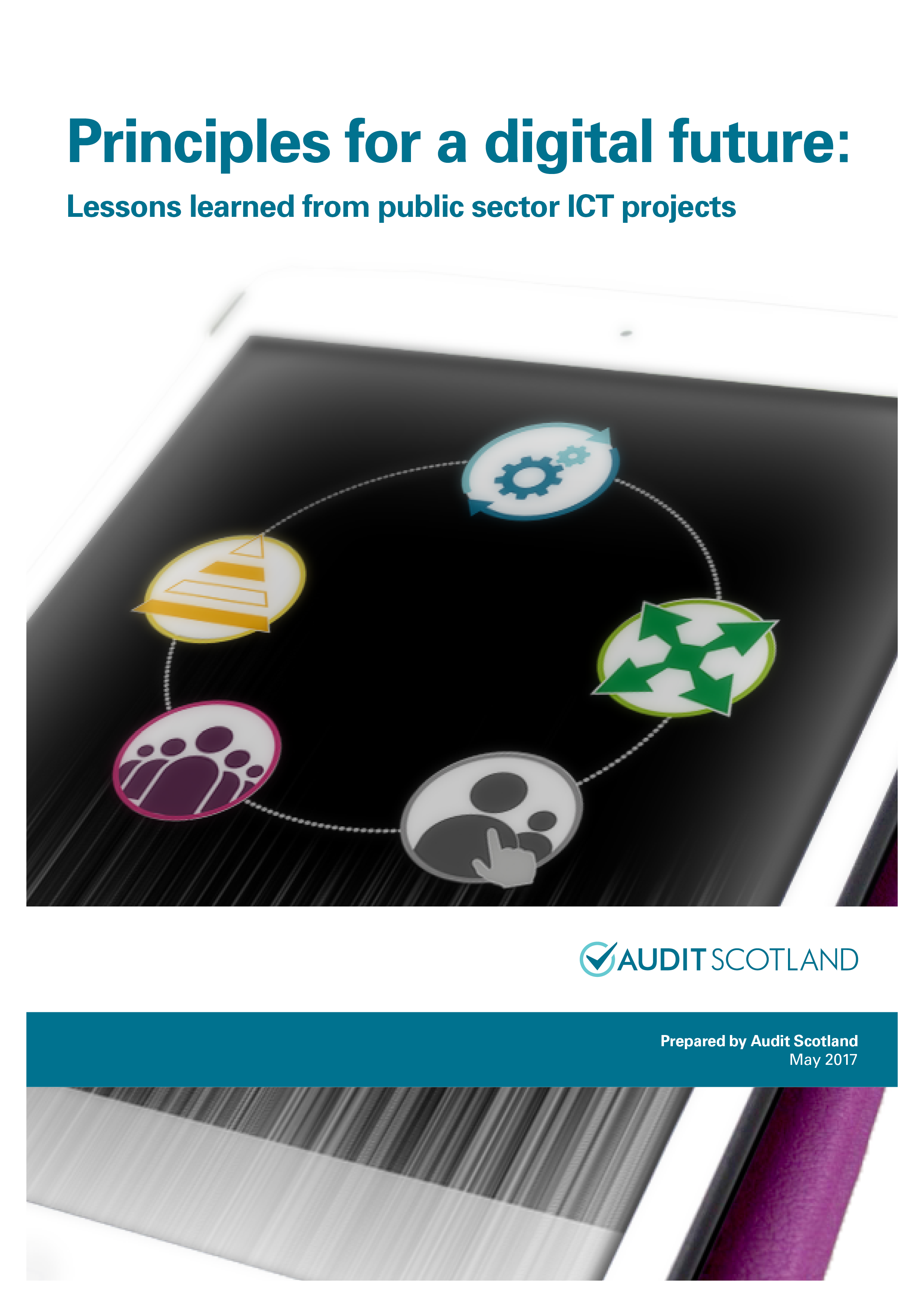 Principles for a digital future May 11, 2017
Principles for a digital future May 11, 2017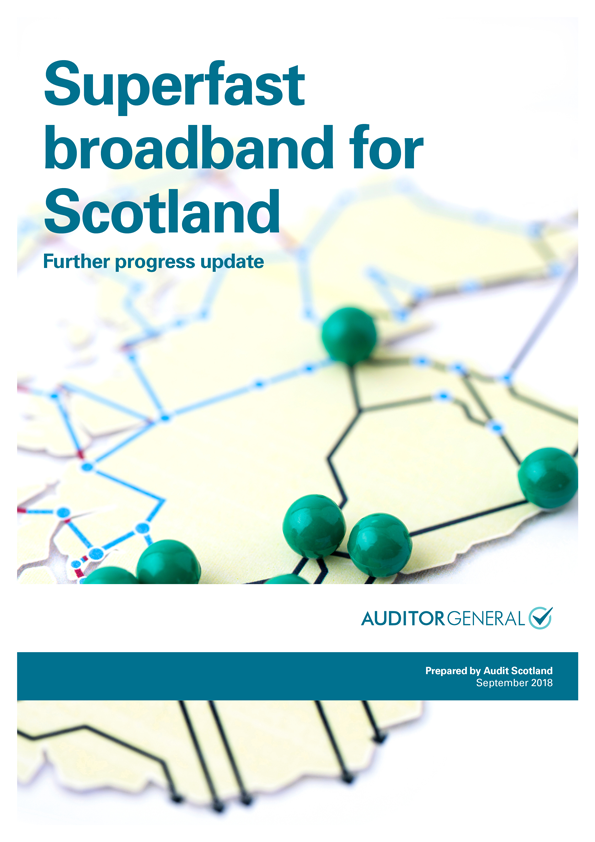 Superfast broadband for Scotland: further progress update December 17, 2019
Superfast broadband for Scotland: further progress update December 17, 2019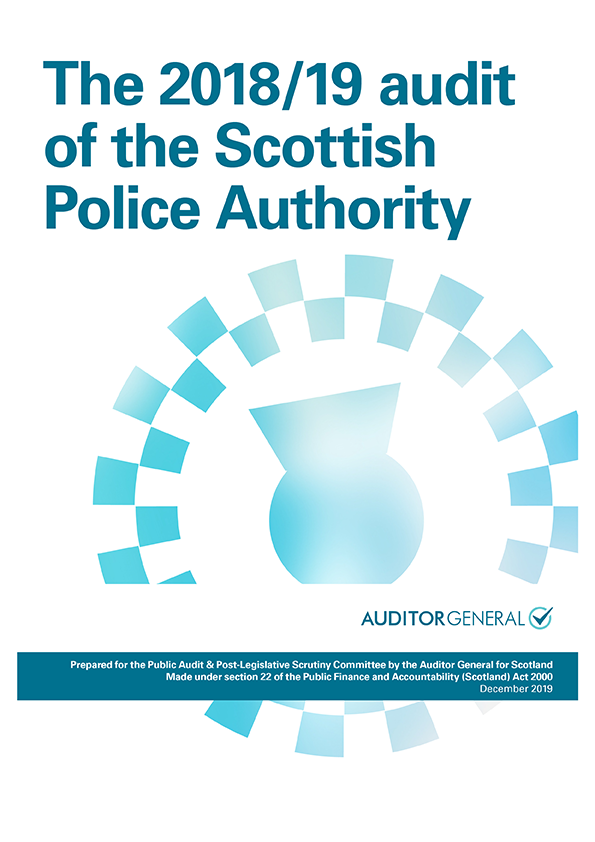 The 2018/19 audit of the Scottish Police Authority December 17, 2019
The 2018/19 audit of the Scottish Police Authority December 17, 2019 i6: a review March 9, 2017
i6: a review March 9, 2017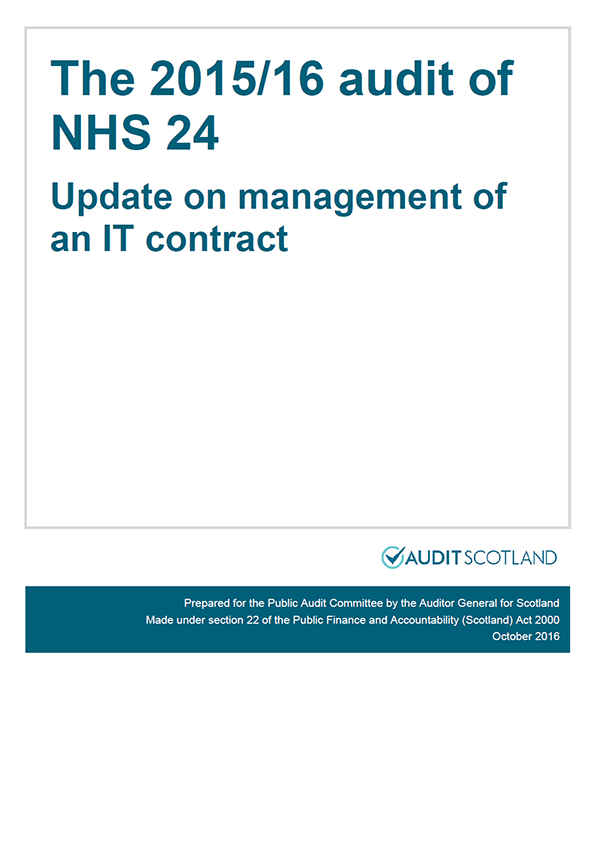 The 2015/16 audit of NHS 24: Update on management of an IT contract October 6, 2016
The 2015/16 audit of NHS 24: Update on management of an IT contract October 6, 2016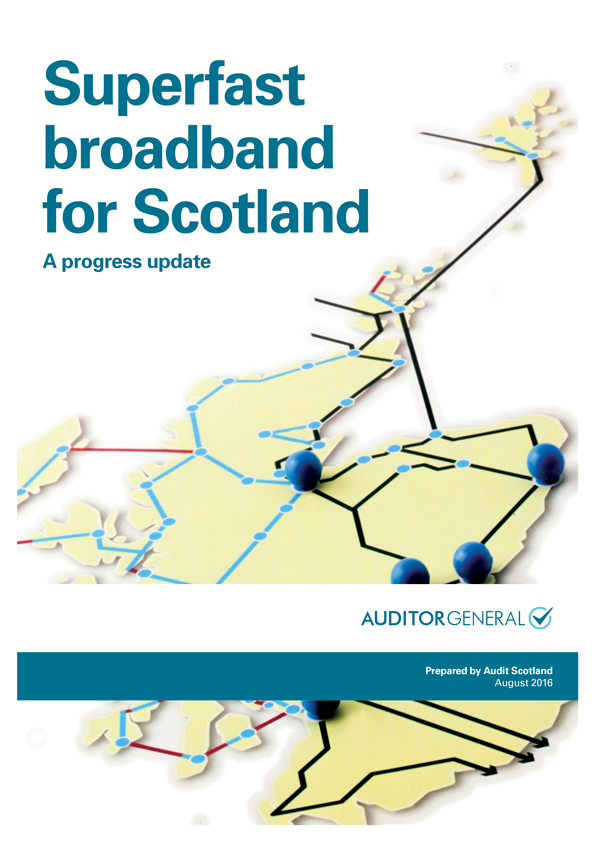 Superfast broadband for Scotland: a progress update August 18, 2016
Superfast broadband for Scotland: a progress update August 18, 2016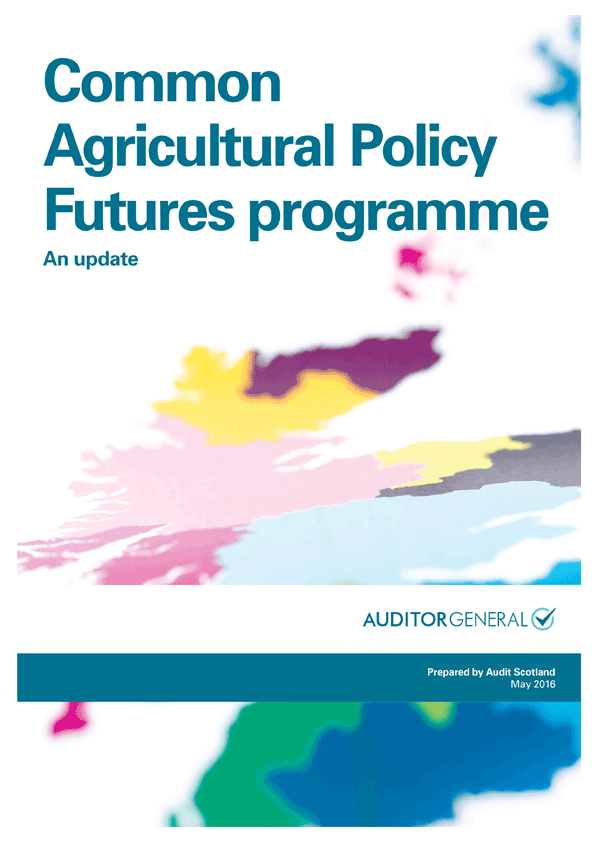 Common Agricultural Policy Futures programme: An update May 19, 2016
Common Agricultural Policy Futures programme: An update May 19, 2016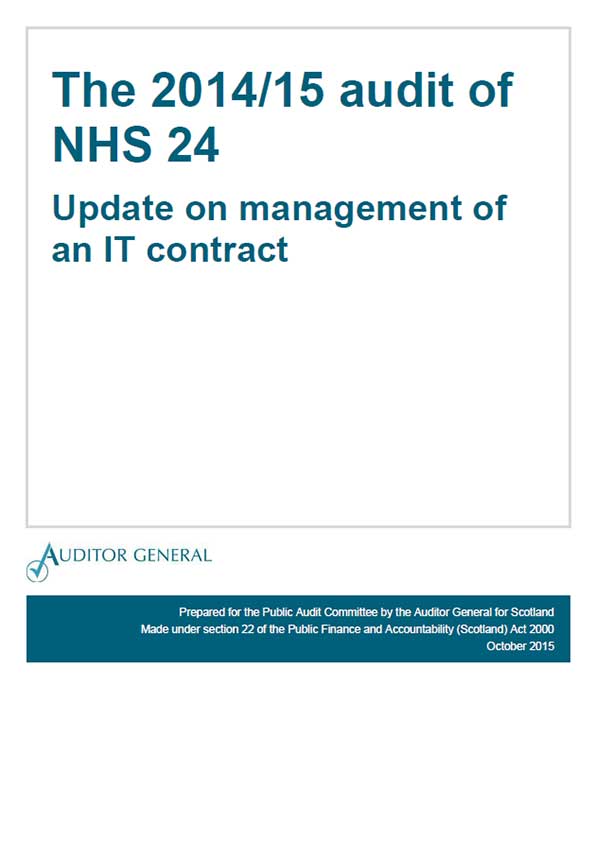 The 2014/15 audit of NHS 24: Update on management of an IT contract October 8, 2015
The 2014/15 audit of NHS 24: Update on management of an IT contract October 8, 2015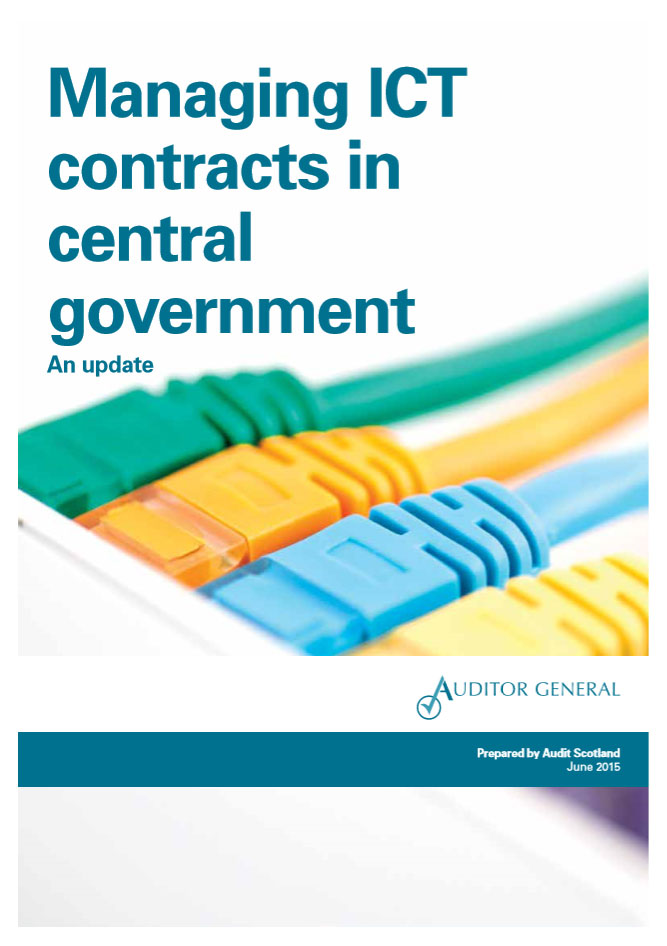 Managing ICT contracts in central government: An update June 18, 2015
Managing ICT contracts in central government: An update June 18, 2015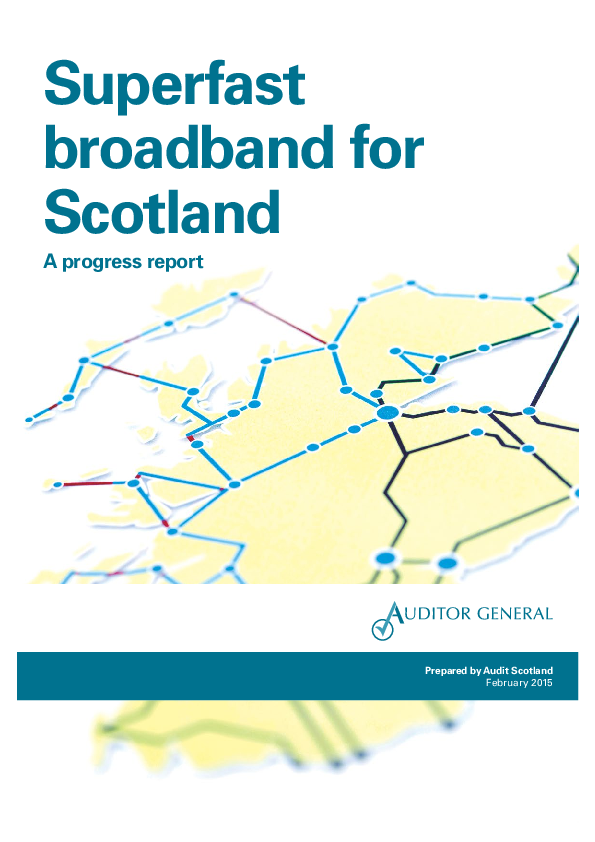 Superfast broadband for Scotland: a progress report February 26, 2015
Superfast broadband for Scotland: a progress report February 26, 2015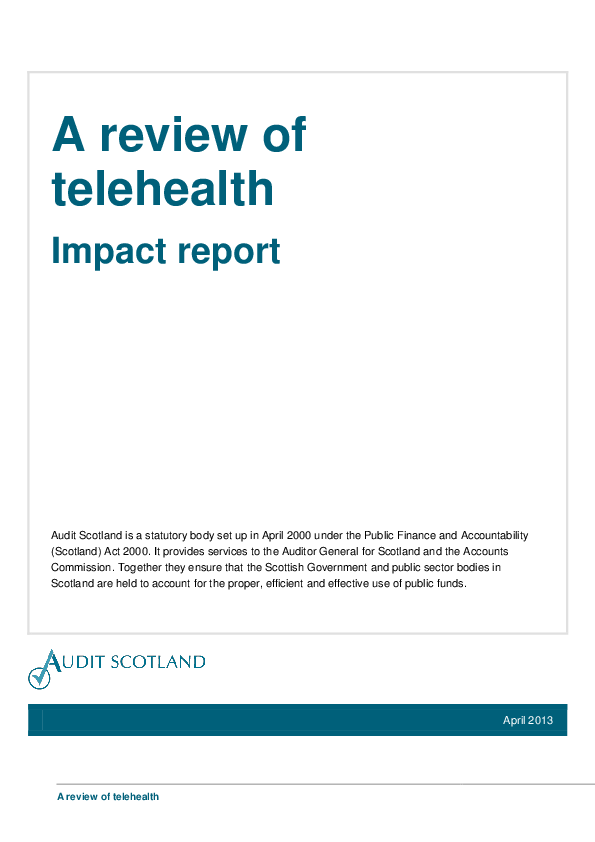 A review of telehealth: Impact report June 13, 2013
A review of telehealth: Impact report June 13, 2013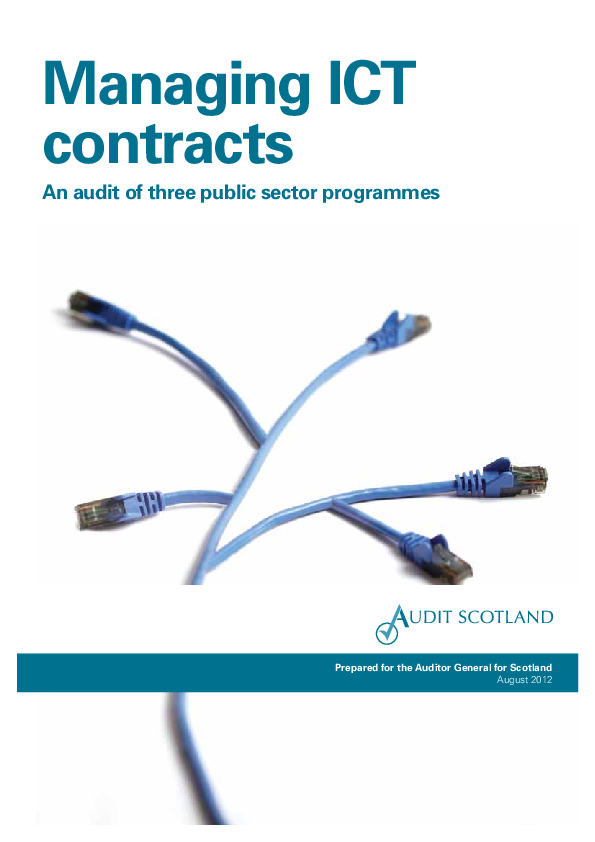 Managing ICT contracts: An audit of the three public sector programmes August 30, 2012
Managing ICT contracts: An audit of the three public sector programmes August 30, 2012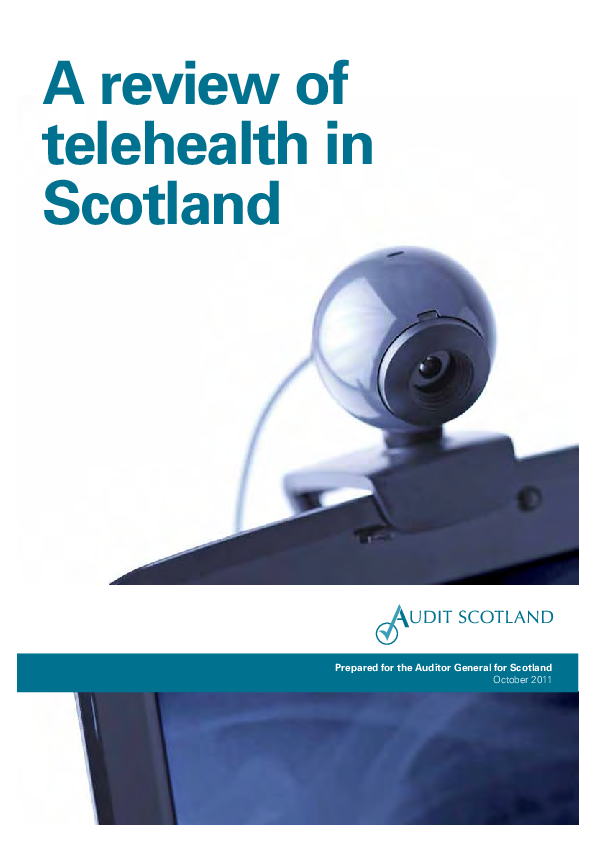 A review of telehealth in Scotland October 13, 2011
A review of telehealth in Scotland October 13, 2011
Audit Scotland improvement tools

Digital progress in local government: Good practice guide
We have created a Good practice guide to highlight things that leadership teams, senior officers and elected members should consider putting in place to help them progress.
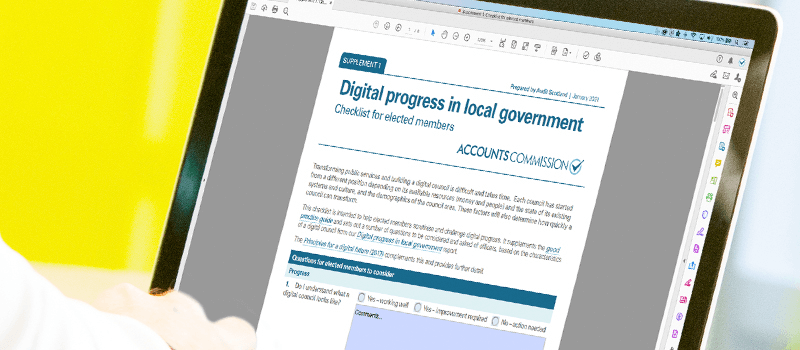
Digital progress in local government: Checklist for elected members
This checklist is intended to help elected members scrutinise and challenge digital progress.
Digital characteristics
Our digital progress in local government - Opens in a new window report sets out the six characteristics below. While originally we identified these as the characteristics of a digital council, they are relevant to all public sector organisations. This is endorsed by the recent national digital strategy which describes them as the characteristics needed for true Digital Government.
Digital leadership
Communicates a clear digital vision and ambition and creates an innovative and collaborative culture that drives change. Understands the potential of people and digital technologies to transform services for citizens.
User focused
Understands the needs of citizens, communities and staff affected by services and policies, and involves them in service design. Focuses on improving outcomes for citizens and other users.
Digital workforce
Has the skills, knowledge and confidence to develop new ways of working, including using new technology.
Collaborative
Develops new ways of working together, sharing good practice and ideas across services and between councils and sectors, and involves citizens and communities.
Technology & data enabled
Makes best use of digital technology to build common solutions, that can be reused and shared to create better value for money. Uses and shares data securely to inform decision-making, enable joint services and achieve better outcomes for citizens.
Innovative
Has a culture of openness and improvement, looks outwards and explores how services can be delivered differently. Has the capacity, capability and processes in place to implement change.
Case studies
Expanding on work in our digital progress in local government report, we have developed additional case studies based on each of the six characteristics to provide illustrative examples of how councils are using digital innovations to deliver services to, and interact with, citizens.
Digital leadership
Engagement and governance: North Lanarkshire Council found that having a corporate communications strategy was critical to its success in sharing digital goals.
The approach focused on engaging with key groups including staff, residents, businesses and elected members through multiple channels. The chief executive and senior leadership team have taken responsibility for engaging staff in delivering digital change across the council, communicating with staff directly about digital transformation through digital roadshows, live and on-line Q&A sessions and a digital transformation newsletter.
There is a dedicated committee with a digital transformation remit, with 25 elected members on the committee supporting the scrutiny of the digital programme, Digital North Lanarkshire (Digital NL). The council also has a digital delivery board that provides overall strategic control for the programme and a corporate working group that ensures any new products or technologies align with Digital NL aims and reuse existing solutions or integrate with the council's digital platform.
User focused
Monitoring outcomes: Perth and Kinross Council developed a benefits realisation framework to identify and capture financial and non-financial benefits from digital transformation projects.
Examples of non-financial benefits include an increase in staff satisfaction or work-life balance, improved customer satisfaction and improved management information and data quality to better inform decisions.
The council recognises that non-financial benefits are more difficult to measure but are essential to assess whether changes are having the intended outcomes for service users, the community and the council. It is intended that non-financial benefits will be monitored alongside savings and efficiencies three months after digital services or programmes have gone live and then annually. These will be reported to the council's Digital Board.
This shows the council is working to understand and improve outcomes for staff, citizens and communities affected by digital transformation, linking to the attributes of a user-focused council.
Digital workforce
Workforce planning: Fife Council has a comprehensive service-level workforce plan for its Business Technology Solutions service, which is responsible for delivering digital transformation.
Fife Council's Organisational Development Strategy and Digital Strategy are clearly linked with a workforce plan in place. This includes the skillsets and culture changes required to support the Digital Strategy, as well as the changes to its technical architecture and supplier and customer engagement.
Collaborative
Cross-sectoral collaboration: A range of partners established the Digital Telecare collaboration to develop an online resource to support the transition from analogue to digital telecare.
Digital Telecare for Scottish Local Government is a collaboration between the Scottish Government's Technology Enabled Care team, the Local Government Digital Office and over 20 Health and Social Care Partnerships (Partnerships). It was established to explore what would be needed to support Partnerships' transition from an analogue to a digital telecare service.
Digital Telecare worked with Partnerships and a range of industry experts to create an online resource - the Digital Telecare Playbook. The playbook outlines the process required to achieve the transition to a digital service for citizens who have telecare in their homes. The online resource also brings together the latest best practice guidance on the transition to digital telecare and allows users to share relevant technical information.
Since launching in October 2019, Digital Telecare has received positive feedback and estimates that the playbook has delivered an operational efficiency saving of 1,296 working days in the first year alone.
Technology and data enabled
Use of data: Glasgow City Council used data held across the council to introduce a system of automatic entitlement to increase uptake of school clothing grants from families living in poverty.
Glasgow City Council set up a Poverty Leadership group to learn about welfare reform and child poverty from the lived experience of citizens. The group worked in collaboration with One Parent Scotland and found that take-up of school clothing grants was low due to a number of barriers, including: challenges with the application process, the need to provide multiple forms of evidence of income and identity, language barriers and a lack of knowledge about entitlement.
The council used data analysts to develop an alternative model of delivery and a system of automatic entitlement by merging existing data sets held across the council. Data matching technology was used to identify those eligible for the grant and found that despite 30,000 being eligible, only 22,000 were actively claiming. The council was able to inform the additional 8,000 residents of their eligibility, subsequently making payments using existing details and providing letters containing barcodes that could be cashed locally for residents who were not already on the system.
The project resulted in almost full take-up, with nearly 30,000 eligible residents now claiming the grant. The council used the same approach to distribute food vouchers to families entitled to both free school meals and school clothing grants while schools were closed during the COVID-19 pandemic. This approach is now also being developed on a Scotland-wide basis to maximise the take-up of benefits and address child poverty.
Innovative
Space and time to innovate: Glasgow City Council has an innovation strategy that provides a framework for innovative ideas to progress. It has established an innovation team and innovation centre to support innovative digital transformation.
Glasgow City Council established an in-house Strategic Innovation and Technology team to support digital transformation. The team developed an Innovation Strategy, linked to the council's digital strategy. This sets out specific actions, including: establishing a culture of innovation by introducing an innovation forum and providing training for digital leaders and champions; introducing a workflow for management of £100k innovation fund; creating a framework to implement innovative ideas and a commitment to delivering four measurable innovations each year.
The council also has the Centre for Civic Innovation, run by its Development and Regeneration Services. The centre is designed to create an environment that allows innovation to develop. One innovation project involved collaborative working with Glasgow's Health and Social Care Partnership (Partnership) to look at using technology to support service users to live independently. This involved a range of partnership working, including collaboration with public and private sector organisations to develop digital telecare solutions to common problems such as false alarm call outs and unreliable sensors. The Partnership also engaged with the City of Edinburgh Council to learn lessons about innovative procurement approaches.
The project was successful in terms of building a range of industry partnerships and gaining an increased understanding of the technology available in order to co-design innovative solutions based around the needs of service users. The project has also allowed the council to start future proofing service delivery, by using digital technology to create efficiencies and enable service users to self-manage the support they require.
Covid-19 case studies

Before the Covid-19 pandemic, the way we lived and worked, and how organisations operated, delivered public services and interacted with citizens was rapidly changing. Since March 2020, the pace of that change has accelerated. Organisations have had to innovate and collaborate on a scale never seen before. Digital technology has become a lifeline, allowing the continued delivery of public services, often to the most vulnerable in society. Its use has also exposed the risk of digital exclusion - not having the skills or resources to access vital public services, maintain learning, and stay connected with others.
The case studies below are sourced from our wider audit work and provide examples of how digital innovation and transformation has been used to respond to the Covid-19 pandemic. We highlight some of the things that went well and the challenges that remain, so that lessons can be learned for future digital transformation.
What is it?
The National e-Learning offer provides a range of live, recorded and supported learning resources to support practitioners in delivering remote learning.
Who is involved?
Education Scotland, Regional Improvement Collaboratives (RICs), the Scottish Government and councils.
What did they do?
When schools closed in March 2020, schools, teachers and councils moved quickly to providing remote learning. Education Scotland supported this shift nationally, making resources available online through GLOW, the national digital platform for remote learning. There was wide variation in the use of GLOW.
Education Scotland, RICs and councils have been working in partnership to develop more comprehensive and coordinated national resources and support. The National e-learning offer is hosted on the National Improvement Hub and brings together:
- Live, interactive lessons through e-Sgoil (a service developed by Comhairle nan Eilean Siar)
- Recorded content for learners to use as directed by their teacher (developed by the West Partnership)
- Support and training materials and events for teachers to deliver remote learning (provided by Education Scotland and CERG Workforce Support workstream).
The CERG Workforce Support workstream also shares learning and best practice, for example through the weekly Scotland Learns Practitioner newsletter, and helps provide peer support for teachers through initiatives such as ‘Big Blethers', informal online gatherings for teachers across the country.
What went well and what were the challenges?
Leadership and collaboration: Partnership working led to more coordinated national support for remote or blended e-learning.
Digital workforce: Training and support for the workforce to deliver remote learning including sharing learning and best practice.
Digital exclusion: Pupils living in very challenging circumstances have been most affected by the impact of school closures. Access to devices and broadband was a significant inhibitor to remote learning, as was parental knowledge and understanding of the various platforms used by schools. The Scottish Government invested £25 million in reducing the number of children and young people in digital exclusion. At December 2020, £24 million of the £25 million for digital inclusion had been allocated to councils. Of the original target of 70,000 devices, just over 72,000 had been provided to learners by end of June 2021, along with just over 14,000 connections. However, there are still people and communities that do not have access to an affordable or reliable internet connection. Good internet connectivity is a challenge for some councils, particularly in rural areas.

What is it?
A Scottish Government programme to support vulnerable people in Scotland to get online.
Who is involved?
Connecting Scotland is a partnership between the Scottish Government, councils and the Scottish Council for Voluntary Organisations (SCVO). It’s supported by a range of local, public and third sector organisations.
What did they do?
Launched in May 2020, Connecting Scotland aims to tackle digital exclusion and support citizens to get online and access the services they need. The Scottish Government initially provided the programme with £5 million, to buy devices, data packages and provide basic digital skills training to 9,000 individuals at risk of isolation because they were on the Covid-19 shielding list.
In August, a further £15 million was made available to help 23,000 more households get online. Disadvantaged families with children and young people leaving care were prioritised. These families were given a device, twelve months unlimited data as well as linked up with a Digital Champion to provide six months of training and support over the phone. Families were identified by councils and third sector organisations, who then applied on their behalf.
Since then, the programme has been extended twice to support different target groups, including older people and people with disabilities. To date, £48 million has been invested with the aim of supporting 60,000 households by the end of 2021.
By June 2021, 36,000 devices had been delivered to households. Almost 600 organisations and all 32 councils have received support from Connecting Scotland.
What went well and what were the challenges?
Collaboration: Cross-sector collaboration and partnership working was an enabler for the development and delivery of the programme. The model – using voluntary and public sector organisations as trusted intermediary bodies – worked well in terms of identifying and reaching programme target groups.
Digital workforce: Digital Champions have had a difficult task providing support remotely (over the phone) during Covid-19 restrictions. The use of visual aids, such as YouTube videos on how to use the different devices, was proven to be essential to support their work.
Technology: Initially data packages were limited to 20Gb per month but this was found to restrict full use of a device. Since phase two unlimited data packages have given users more freedom to use devices without monitoring usage. Individuals have ownership of the device, rather than a loan.
An evaluation of the programme was published in February 2022 and made a number of strategic and operational recommendations for the future of the programme. The Scottish Government is considering these.
Source: Scottish Government, SCVO and Digital progress in local government.
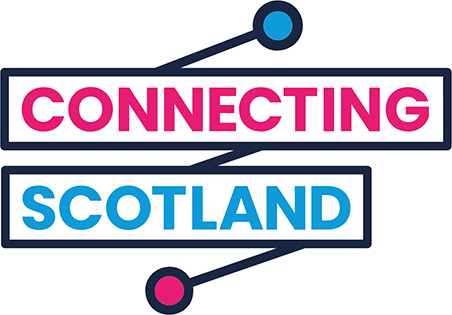
What is it?
Near Me is a video consulting service used to facilitate remote consultations between patients and clinicians, clients and service providers, to improve access to health and care, with plans to extend it to other public services.
Who is involved?
It is led by the TEC (Technology Enabled Care) Programme within the Scottish Government's Digital Health and Care Directorate. Initially trialled in the North of Scotland, it was rolled out across primary and secondary care, as well as social care settings across Scotland. The programme has now been piloted with housing associations as part of plans to extend its use to social landlords and other public services in Scotland.
What did they do?
Building on the success of the early adopters, in November 2018 TEC launched a £1.6 million challenge to support wider rollout of Near Me across all health boards. In March 2020, TEC launched a 12-week scale-up plan to support rapid deployment of Near Me services to maintain some level of service provision during the pandemic. This included targeted support for priority areas such as Mental Health, GP practices and care homes.
Use of the service rose from less than 1,000 consultations per month in February 2020 to almost 70,000 per month from June to September 2020. Hospital and community care services accounted for over 75 per cent of activity, with mental health services constituting over a third of this. Few GPs had embraced Near Me before the pandemic but around two-thirds did during the first lockdown. As the first lockdown eased, hospital and community use of Near Me continued to rise, while GP activity fell back with only around a third of practices continuing to use it, with telephone consultations preferred.
Uptake was lower in care homes due to connectivity limitations but care staff who did use it were generally very positive. An initiative has been launched to facilitate digital inclusion for residents in care homes - a collaboration with TEC and the Connecting Scotland Programme.
What went well and what were the challenges?
Patients and professionals surveyed found video consulting beneficial for both during the pandemic (eg, infection control) and longer term (eg, reduced travel times). Patient satisfaction was generally positive. Technical performance and call quality had a significant impact on patient-reported outcomes. Clinicians reported that video calls are clinically appropriate in certain circumstances but not others (for instance for rare/less predictable conditions or where physical examinations or medical tests are needed).
Leadership: Having national-level commitment and groundwork facilitated rapid adoption.
Digital workforce: It was a huge shift in working routines both for administration (eg, managing patients with entry to the virtual waiting room) and clinical staff. Good support was provided for technical set-up, and guidance and training for staff that was grounded in lessons learned from earlier roll outs.
Collaboration: Taking a quality improvement approach to continually monitor and adapt to rapid scale up. Having a large number of people from across many quality improvement teams helped support engagement, training and service implementation.
Technology: Having a single national platform and branding helped rapid scale up. There are still some challenges with infrastructure to enable video calling.
User focused / Digital access: Professionals had some concerns related to digital access and health inequalities, and lack of privacy within a patient's home. Reasons for limited use in GP practices included the varied case mix seen in primary care and the challenge of incorporating the technology into time constrained appointments. Further work is needed to better understand how best to embed video consulting into GP routines.
Audit Scotland reported more broadly on digital health innovations in our NHS in Scotland 2021 overview report - Opens in a new window.
Source: NHS in Scotland 2020 - Opens in a new window and Evaluation of the Near Me video consulting service in Scotland during Covid-19, 2020, communication from Scottish Government, The Scottish Federation of Housing Associations - Opens in a new window.

What is it?
Aberdeen City Council's digital transformation allowed it to respond well to the challenges of the Covid-19 pandemic.
Who is involved?
Aberdeen City Council, working closely with its business partner.
What did they do?
In 2016, the council approved its digital strategy 'Being digital', 'to change how we do business to meet outcomes and customers' expectations through digital solutions'. The strategy focuses on three areas: improving customer services, improving staff experience and improving how resources are used. It is underpinned by six design principles:
- Design services with our customers at the centre
- Present easy to use, integrated and standard interfaces
- Build services, not just websites
- Hold information once and securely
- Use data well
- Make sure the foundations work
In 2019, the council began working with a business partner to maximise how it uses digital technology to improve services.
The council, working closely with its business partner, has substantially delivered on its digital strategy. For example:
- paper-based processes have largely been digitised and customers can now access more services online.
- new cloud-based systems have been procured to allow more mobile working and greater use of real-time data.
- a peer learning model has been adopted with over 500 Digital Champions, and a number of service-specific super champions, supporting employees to learn to use new technologies.
- a chatbot, AB1, has been developed to provide instant online responses to customer and staff queries. Queries related to bin collections, council tax, education or annual leave and payroll are now routed through AB1.
- Robotic Process Automation (RPA) has been implemented in several service areas, including education, finance and social care to remove routine tasks, releasing capacity for staff to support front-line activities. In Education services the equivalent of 14 FTE teacher's worth of administration was removed.
- digital initiatives and efficiencies have underpinned many of the £125 million savings delivered so far in the council's wider transformation programme.
The progress made in adopting digital practices, and the investment in cloud-based systems and devices for staff, meant that the council was well prepared to respond to the Covid-19 pandemic. Within days, staff were working from home to keep essential services running and there was rapid update of video conferencing and messaging apps like Microsoft Teams. The council updated its chatbot AB1 to respond to high demand - approximately 200 individual queries per day - for Covid-19 information and it successfully responded to over 80 per cent of customer enquiries. The progress made against the digital strategy has also been beneficial for partnership working during the pandemic. There is now greater sharing of data between Community Planning Partners and work is ongoing to further develop collaborative data sets to inform how services can be targeted to meet demand and customer requirements.
What went well and what were the challenges?
Leadership: Clear vision. Commitment from leadership to embedding the cultural changes associated with changing working practices. The council strengthened its digital leadership and direction to focus on communicating changes to staff, with staff surveys suggesting this has been effectively achieved.
Digital workforce: Large Digital Champions network in place to support staff. The council invested in digital leadership for its managers and engaged the workforce to understand their needs to improve adoption of technology. Staff trained by business partner to manage chatbot.
Technology and data: Decommissioned legacy systems and moved applications and data to cloud-based systems. Better use and sharing of data. Developed data sharing principles.
Collaboration: Established good working relationships with partners as well as knowledge transfer.
Innovation: One of the first Scottish councils to develop chatbots to automate initial customer and staff queries.
Source: Aberdeen City Council BVAR 2021 - Opens in a new window.
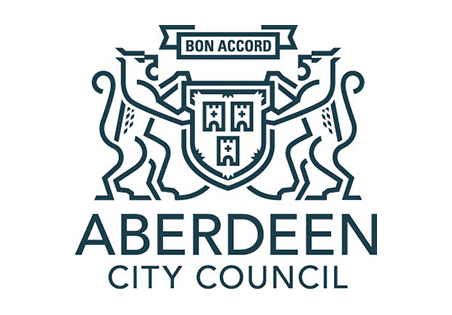
Resources

Resources for enabling digital inclusion
We published our report on tackling digital exclusion on 22 August 2024. This looked at what digital exclusion is and the impact it can have on people in Scotland using insight from people with lived experience. We also looked at how well the public sector is tackling the issue.
This guide contains links to support resources for people and organisations.
Resources for people
Skills
There are a number of online self led resources and tools to develop your digital skills.
Online Behaviour and Safety
The Scottish Government have developed an online behaviour and safety guide. It provides information for Parents of children of all ages.
Learn My Way
Learn My Way is a free digital skills training platform.
Scottish Council for Voluntary Organisations (SCVO)
The SCVO offer other skills resources:
Cyber and Fraud Centre Scotland
Cyber and Fraud Centre Scotland provide Cyber security resources, including a Scams and Fraud Guide for Older People.
Connectivity
Support to access superfast broadband and affordable connections.
R100 and Scottish Broadband Voucher Scheme
Find out whether your home address currently has access to superfast broadband, or has plans to receive superfast broadband, or is eligible for a Scottish Broadband Voucher Scheme. About R100: Digital Scotland Superfast Broadband.
Social tariffs
Social tariffs are discounted broadband and mobile deals for people on Universal Credit and other benefits. These tariffs are delivered in the same way as normal packages, just at a lower price. Ofcom provide a list of broadband and phone social tariffs on their website.
Local support
Resources for organisations
There are a range of resources for organisations to support people to use digital tools and technology.
Scottish Council for Voluntary Organisations (SCVO)
Scotland's Digital Inclusion Charter - The SCVO with support from Scottish Government have launched a new Charter which has resources to support, guide and recognise organisations on their digital inclusion journey. It includes some of the following resources:
- Digital Inclusion 'how to' guides
- Essential Digital Skills framework and toolkit
- Digital Inclusion research library
- Digital Inclusion Masterclass series
They also provide broader strategy resources such as:
Good Things Foundation: National Digital Inclusion Network
The Good Things Foundation provides a national network for organisations providing digital inclusion support and access to data and device banks:
- National Digital Inclusion Network - a network of 5,000 organisations supporting their local communities with digital inclusion.
- National Databank that provides free mobile data packages for communities
- National Device Bank provides free refurbished devices for people who need them
Protecting Minority Ethnic Communities Online (PRIME) project
The Ethnic People’s Code of Practice for Equitable Digital Services (ME-CoP) contains principles and recommendations to guide the development of digital services to help safeguard against some of the inequities minoritised ethnic people experience in access, outcomes, and their experiences of services.

Giving evidence to Parliament
- Principles for a digital future at the PAC (Public Audit Committee) - ongoing. The Scottish Government provides 6 monthly updates to parliament on major central government ICT projects.
- Tackling digital exclusion at the Public Audit Committee on 5 September 2024.
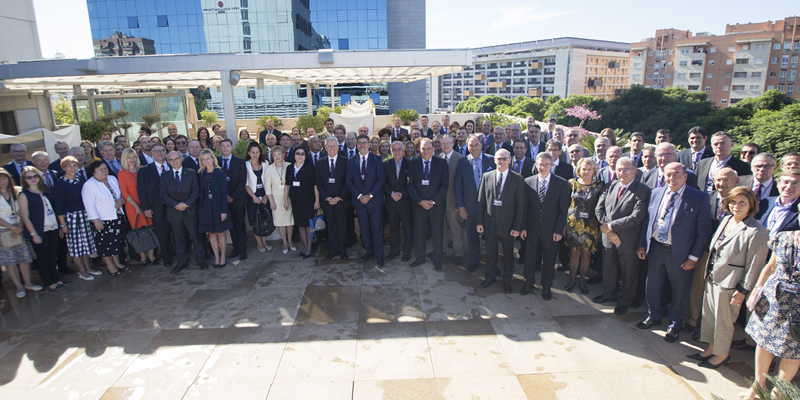
Conferences
We take part in a range of engagement activities to spread the word about our work on digital in the public sector in Scotland. We have recently spoken at a number of events to share findings and recommendations from our report on Digital progress in local government:
- TPAS Scotland (national tenant and landlord participation advisory service) conference, October 2024
- Digital Scotland, October 2022
- Public sector smart working - digital transformation, enhancing productivity, Holyrood conference, August 2021
- Local Government Digital Partnership Forum, May 2021
- Digital Leaders Week, Conference session on Digital Maturity of Scottish Local Government, March 2021
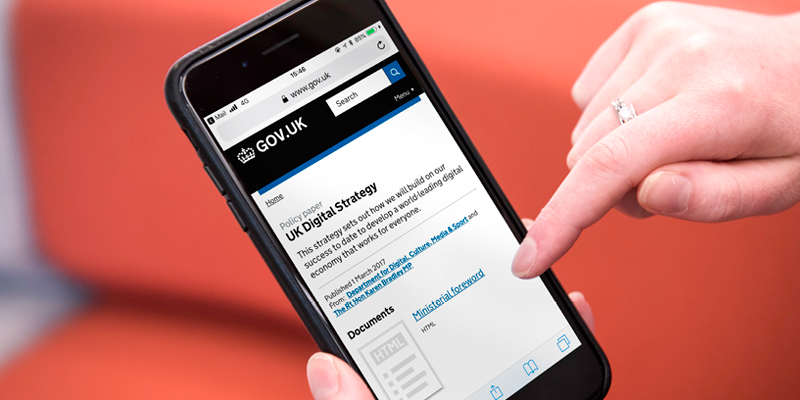
Government publications
The Scottish Government and COSLA, and UK Government, provide the following strategies and guidance:
National strategies
- Digital health and care strategy - Opens in a new window, Scottish Government, October 2021
- Realising Scotland's full potential in a digital world - a digital strategy for Scotland: progress report 2017 to 2021, Scottish Government Digital Strategy, 30 July 2021
- A changing nation: how Scotland will thrive in a digital world - Opens in a new window, Scottish Government and COSLA refreshed Digital Strategy, March 2021
- Scotland's AI Strategy - Opens in a new window Scotland's AI Strategy, March 2021
- National Data Strategy - Opens in a new window Department for Digital, Culture, Media and Sport, December 2020
Cyber
- Scottish public sector cyber resilience framework v2.0 Scottish Government, December 2024
- Cyber Resilient Scotland: strategic framework - Opens in a new window Scottish Government, Feb 2021
- Cyber resilience: framework and self assessment tool - Opens in a new window Scottish Government, Jan 2020
Digital transformation and innovation
- Digital Scotland Service Standard - Opens in a new window Scottish Government, February 2021
- The Scottish Approach to Service Design (SAtSD) - Opens in a new window Scottish Government, June 2019
- Technology Assurance Framework - Opens in a new window Scottish Government, 2017
- CivTech - Opens in a new window The CivTech Alliance
- The 7 Lenses of Transformation Guide - Opens in a new window, UK Government Digital Service, May 2018.
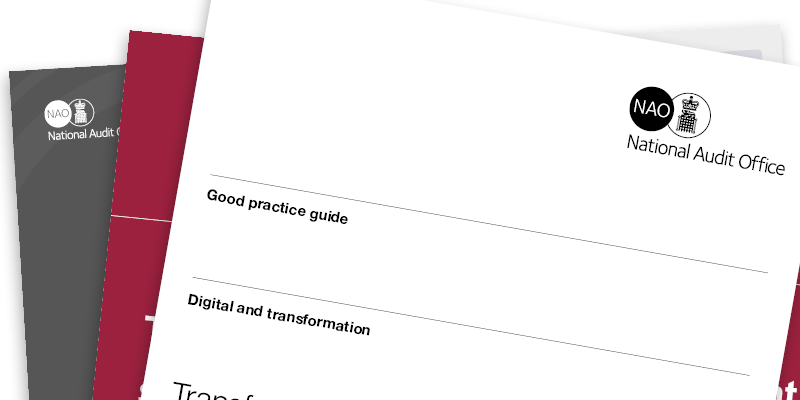
UK Audit office publications
- The challenges in implementing digital change - Opens in a new window, NAO, July 2021
- Broadband investment in Northern Ireland - Opens in a new window, NIAO, June 2021
- Improving broadband - Opens in a new window, NAO, October 2020
- Digital transformation in the NHS - Opens in a new window, NAO, May 2020
- Challenges in using data across government - Opens in a new window, NAO, June 2019
- Guidance for audit committees on cloud services - Opens in a new window, NAO, April 2019
- The maturity of local government in use of data - Opens in a new window, AW, December 2018
- Transformation guidance for audit committees - Opens in a new window, NAO, May 2018
- Investigation: WannaCry cyber attack and the NHS - Opens in a new window, NAO, October 2017
- Cyber security and information risk guidance for Audit Committees - Opens in a new window, NAO, September 2017
Digital Advisory Panel
Audit Scotland's Digital Advisory Panel provides expertise and advice to our digital-focused audit work. Members sit on the panel in an advisory capacity only. The content and conclusions of reports presented to the panel are the sole responsibility of Audit Scotland. We would like to thank the advisory panel for their ongoing input to our work:
- Charlie Anderson, Fife Council
- Jonathan Cameron, Scottish Government
- Rab Campbell
- Alexander Holt, Scottish Government
- Geoff Huggins, Scottish Government
- Stephen Ingledew, FinTech Scotland
- Jude McCorry, Scottish Business Resilience Centre
- David McNeill, Scottish Council for Voluntary Organisations
- Anne Moises
- Martyn Wallace, Local Government Digital Office
Get in touch
To discuss Audit Scotland's work on digital or let us know what you think about this page, please contact:
Dharshi Santhakumaran, Senior Manager
DSanthakumaran@audit.scot




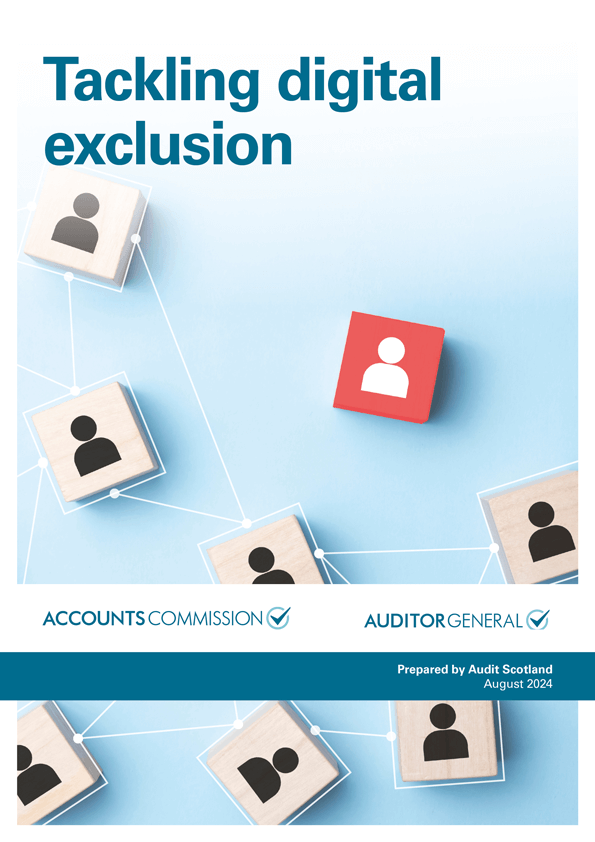 Tackling digital exclusion
Tackling digital exclusion Radical action needed on data
Radical action needed on data 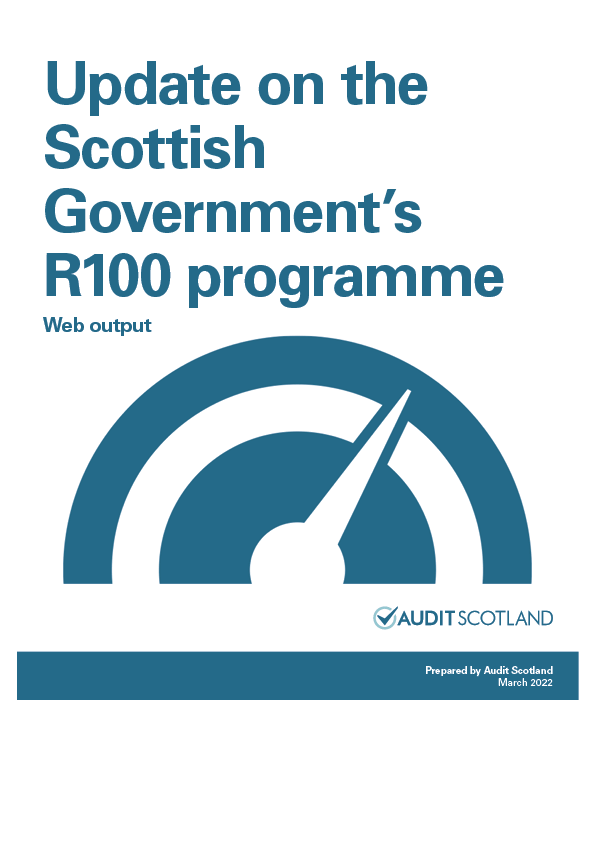 Update on the Scottish Government's R100 programme
Update on the Scottish Government's R100 programme 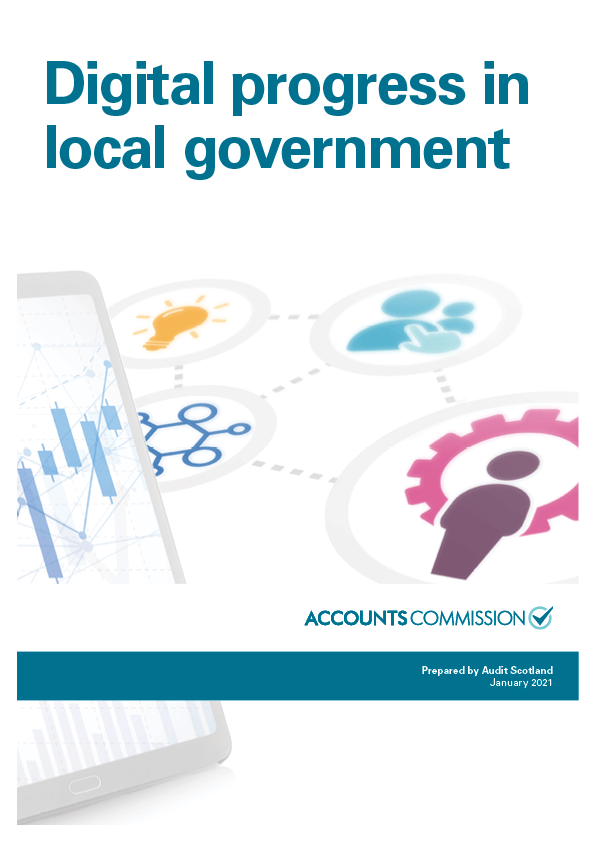 Digital progress in local government
Digital progress in local government 



